What lies beyond the vast expanse of our universe remains one of the greatest mysteries of our time. Among the enigmas that continue to captivate our curiosity are black holes. These celestial phenomena are shrouded in darkness and mystique, defying our understanding of the cosmos. In this article, we embark on a captivating journey to unravel the secrets of black holes, exploring their nature, formation, scientific underpinnings, detection methods, and profound implications. Prepare to delve into the depths of the unknown, where the laws of physics are stretched to their limits, and mysteries abound.
Contents
- What is a Black Hole?
- How Do Black Holes Form?
- The Science Behind Black Hole Formation
- Observing and Detecting Black Holes
- The Implications of Black Holes
- Unanswered Questions and Ongoing Research
- Conclusion
-
Frequently Asked Questions
- What is the gravitational force like inside a black hole?
- Can anything escape from a black hole?
- What happens to time near a black hole?
- Do black holes only exist in space?
- Are there different sizes of black holes?
- What happens when two black holes collide?
- Can black holes die?
- Can a spacecraft survive near a black hole?
- Do black holes have a top or bottom?
- Are black holes completely ‘black’?
- References
-
Frequently Asked Questions
- FACan anything escape from a black hole?
- FACan black holes die or disappear?
- FAAre black holes always the same size?
- FACan a black hole consume the entire universe?
- FACan black holes move or travel through space?
- FACan we see black holes directly with telescopes?
- FAAre there any black holes in our solar system?
- FACan black holes appear anywhere in the universe?
- FACan black holes create new universes?
- FACan we enter a black hole and survive?
- References
- Read More
What is a Black Hole?
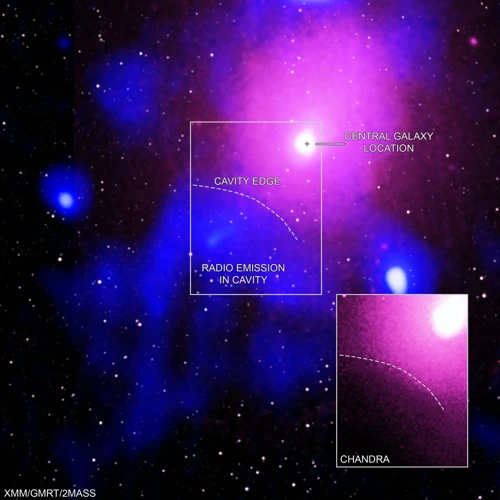
A black hole is a mind-boggling astronomical object that possesses an incredibly strong gravitational pull, so powerful that nothing, not even light, can escape its grasp. These cosmic behemoths are formed from the remnants of massive stars that have exhausted their nuclear fuel and undergone a cataclysmic collapse. Their immense gravitational pull arises from a concentration of mass compressed into a tiny space. This phenomenon creates a region in space where gravity is so intense that the escape velocity exceeds the speed of light, known as the event horizon. The event horizon marks the point of no return, beyond which any object that crosses its threshold is inexorably drawn into the black hole’s clutches. The boundary of the event horizon is a gravitational sphere with a radius known as the Schwarzschild radius. As we unravel the intricacies of black holes, an astonishing fact emerges: these celestial entities defy the very laws of physics as we understand them. The behavior of matter and energy within a black hole’s depths remains a puzzle that scientists continue to strive to comprehend. Their existence challenges our understanding of the universe and poses profound questions about the nature of space, time, and gravity.
Definition and Characteristics
The definition and characteristics of black holes are both intriguing and awe-inspiring. As mentioned earlier, a black hole is an astronomical entity with an intense gravitational pull that is so strong, not even light can escape its clutches. This remarkable feature gives rise to their descriptor as “black” holes, as they do not emit any visible light. Instead, they are usually detected through the effects they have on surrounding matter and the radiation they emit. Black holes come in various sizes, ranging from stellar-mass black holes, which are formed from the collapse of massive stars, to supermassive black holes, found in the centers of galaxies like our own Milky Way. These colossal objects can have masses millions or even billions of times that of our Sun. Another notable characteristic of black holes is their singularity, a point within the black hole where gravitational forces become infinitely strong and spacetime is highly curved. The singularity is wrapped with an invisible boundary called the event horizon, beyond which nothing can escape its gravitational grip. As our understanding of black holes continues to evolve, scientists are in a constant quest to study these cosmic enigmas and decipher the secrets they hold, shedding light on the enigmatic nature of our universe.
The Event Horizon
The event horizon of a black hole is an extraordinary boundary beyond which nothing can escape the gravitational grip of this cosmic entity. It is the point of no return, where the gravitational pull becomes so immense that even light cannot break free. Crossing the event horizon is akin to falling into a cosmic abyss from which there is no escape. According to Einstein’s theory of general relativity, the event horizon forms a perfectly spherical boundary surrounding the singularity at the center of a black hole. The singularity is a region of infinite density where all the mass of the black hole is concentrated. Inside the event horizon, the fabric of space and time becomes incredibly distorted, creating a gravitational force so powerful that even light cannot overcome it. As objects approach the event horizon, they experience a phenomenon known as gravitational time dilation, where time slows down significantly. This time dilation is a consequence of the strong gravitational field generated by the black hole. While the event horizon itself cannot be directly observed, scientists infer its existence and properties through the behavior of surrounding matter and the effects it has on its surroundings. Understanding the dynamics of the event horizon is crucial in unraveling the mysteries of black holes and the mind-boggling phenomena that occur within their depths.
How Do Black Holes Form?
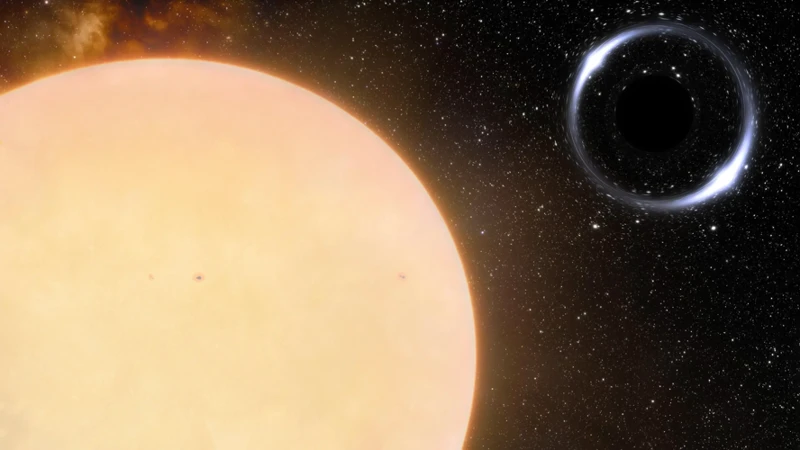
Black holes form through different processes depending on their size. Stellar black holes, also known as stellar-mass black holes, are born from the dramatic collapse of massive stars. When a massive star exhausts its nuclear fuel, it can no longer withstand the force of gravity pushing inward. The star’s core collapses under its own weight, causing a violent explosion known as a supernova. During this explosive event, the outer layers of the star are expelled into space, while the core collapses into an incredibly dense object called a neutron star. If the remaining mass of the collapsed core is about three times or more that of the Sun, the gravitational forces become so powerful that not even neutron degeneracy pressure can resist it. The core continues to collapse inward, forming a stellar black hole.
On the other hand, supermassive black holes are thought to exist at the centers of most galaxies, including our own Milky Way. The origins of these massive cosmic entities are still not fully understood. One theory suggests that they may form through the gradual accumulation of matter over time. As matter and gas collide and merge within a galaxy’s central regions, the growing black hole swells in size. Another hypothesis proposes the possibility of direct collapse, where extremely massive clouds of gas collapse under their own gravity, skipping the stellar evolution process and directly forming a supermassive black hole. The formation mechanisms of supermassive black holes remain an area of active research and observation, with scientists striving to uncover the secrets behind their existence and growth.
Birth of a Black Hole: Stellar Collapse
The birth of a black hole through stellar collapse is a dramatic and awe-inspiring phenomenon. It occurs when a massive star, typically dozens of times more massive than our Sun, reaches the end of its life. At this stage, nuclear fusion in the star’s core can no longer counteract the inward force of gravity. The star undergoes a catastrophic collapse, with its outer layers hurtling outward in a colossal explosion known as a supernova. The core of the star, however, continues to collapse inward, becoming incredibly dense. If the collapsing core has a mass greater than three times that of our Sun, gravity becomes so overwhelming that nothing can stop its collapse. The core becomes infinitely dense, forming a singularity, a point where the laws of physics as we know them break down. This singularity is surrounded by the event horizon, creating a black hole. The process by which a stellar collapse gives rise to a black hole is a testament to the unimaginable forces at play in the cosmos and provides us with a glimpse into the profound mysteries of the universe.
Supermassive Black Hole Formation
Supermassive black holes are a class of black holes with an extraordinary mass, ranging from millions to billions of times the mass of our sun. The origin and formation of supermassive black holes remain a topic of intense scientific investigation and curiosity. One leading theory suggests that they may form through the gradual accretion of matter over billions of years. As matter, such as gas, dust, and stars, gravitationally interacts and accumulates in the center of a galaxy, it can eventually collapse under its own gravity, giving birth to a supermassive black hole. Another hypothesis proposes that supermassive black holes could arise from the collision and merging of numerous smaller black holes at the heart of a galaxy. These mergers could occur repeatedly over cosmic timescales, gradually building up the immense mass of a supermassive black hole. While these theories provide plausible explanations, the precise mechanisms that drive the formation of supermassive black holes remain an area of ongoing research and debate. Understanding the origin and evolution of these colossal cosmic entities is crucial for unraveling the mysteries of our universe and its intricate web of celestial bodies.
The Science Behind Black Hole Formation
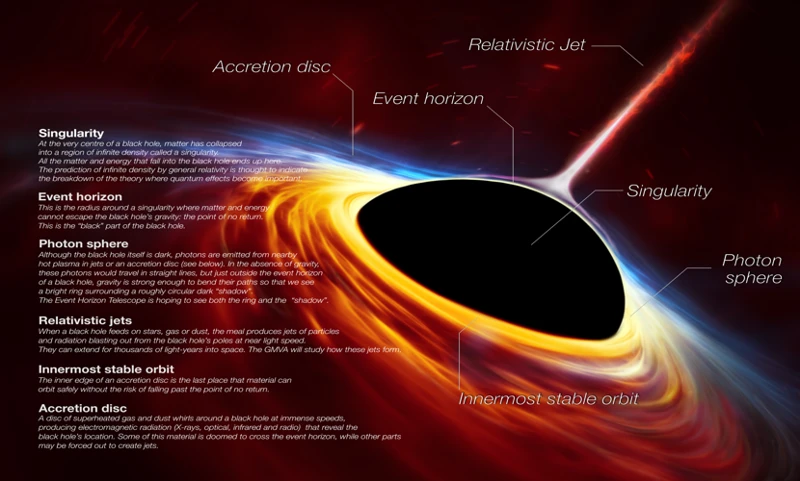
Understanding the science behind black hole formation requires delving into the realm of general relativity and the force that dominates our universe: gravity. According to Albert Einstein’s revolutionary theory of general relativity, gravity is not a force, but rather a curvature of spacetime caused by mass and energy. When a massive star exhausts its nuclear fuel, it undergoes a dramatic collapse. The inward gravitational pull becomes so strong that it overcomes the outward pressure generated by the fusion reactions within the star, causing it to implode. This stellar collapse is the birth of a black hole. In the aftermath of the collapse, the star’s mass becomes concentrated in an incredibly small space, creating a singularity – an infinitesimally small point with infinite density. Surrounding the singularity is the event horizon, the boundary beyond which nothing can escape. The formation of supermassive black holes, which exist at the centers of galaxies, is still a subject of ongoing research. It is believed that they may form through the gradual accumulation of mass over time, or through the collision and merger of smaller black holes. Unraveling the intricate details of black hole formation continues to be a fascinating and active area of investigation in the realm of astrophysics.
General Relativity and Gravity
General relativity is a groundbreaking theory formulated by Albert Einstein that revolutionized our understanding of gravity. According to general relativity, gravity is not just a force pulling objects towards each other, but rather the curvature of spacetime caused by the presence of mass and energy. In this framework, massive objects, such as stars, planets, and black holes, create a curvature in spacetime that dictates how other objects move in their vicinity. The more massive an object, the greater its effect on the curvature of spacetime and the stronger its gravitational pull. Black holes, being incredibly massive and dense, have an extraordinary gravitational force. The curvature of spacetime near a black hole is so extreme that it warps the path of light itself, causing it to follow a curved trajectory. This phenomenon, known as gravitational lensing, has been observed and confirms Einstein’s theory. General relativity also predicts the existence of gravitational waves, ripples in spacetime caused by the acceleration of massive objects. The detection of gravitational waves in 2015 further validated Einstein’s theory and opened up new avenues for studying black holes and the universe at large. The relationship between general relativity and black holes is a fascinating area of research that continues to drive our understanding of the cosmos.
Role of Matter and Energy
The role of matter and energy in the formation and behavior of black holes is a subject of immense scientific intrigue. According to Albert Einstein’s theory of general relativity, mass and energy are intimately connected, and the presence of matter and energy influences the fabric of space and time. In the realm of black holes, the concentration of mass creates an intense gravitational field that warps spacetime to extreme degrees. As matter and energy approach the event horizon, their behavior undergoes a radical transformation. The gravitational forces at play become so intense that they distort the very fabric of spacetime, creating a gravitational well from which nothing can escape. Within the event horizon, theories suggest that matter is crushed into a singularity, a point of infinite density and zero volume. This concept challenges our current understanding of the fundamental laws of physics. The interplay between matter, energy, and gravity within the mysterious confines of a black hole continues to be an area of active research and theoretical exploration as scientists seek to untangle the enigmatic nature of these cosmic phenomena.
Observing and Detecting Black Holes
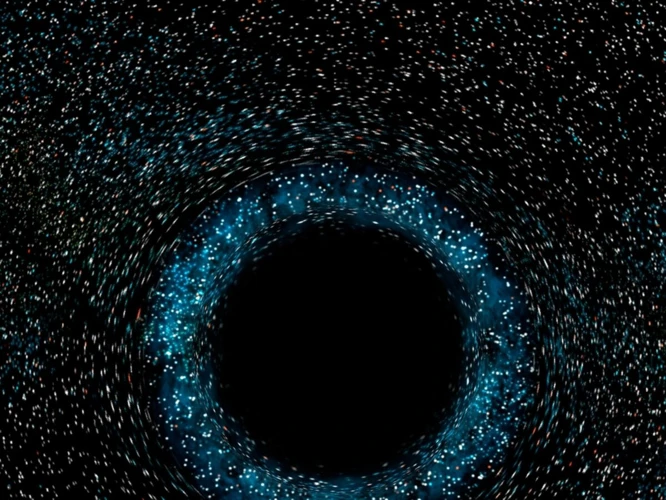
Observing and detecting black holes in the vast expanse of space is no easy feat. Since black holes do not emit light, their presence can be inferred through the effects they have on their surroundings. One common sign of a black hole’s presence is the gravitational influence it exerts on nearby objects. When a black hole interacts with a companion star, it can draw matter from the star into a swirling accretion disk, heating it up and causing it to emit X-rays. This phenomenon can be detected using specialized telescopes and observatories that are designed to capture high-energy radiation. Observing the motion of stars near the center of our galaxy has also provided compelling evidence for the existence of a supermassive black hole lurking at its core. Scientists use a variety of techniques to detect and study black holes, including radio observations and gravitational wave detections. The landmark detection of gravitational waves in 2015, which earned the Nobel Prize in Physics, opened up new avenues for studying black holes and other cosmic phenomena. By observing the gravitational waves emitted during the merger of two black holes, scientists can glean valuable insights into their properties, such as their masses and spins. The technological advancements in astronomy continue to push the boundaries of our understanding, allowing us to peer deeper into the cosmos and unravel the mysteries of black holes.
Signs of a Black Hole’s Presence
Signs of a black hole’s presence in the vastness of space are elusive yet captivating. While direct observation of a black hole itself is challenging due to its light-devouring nature, scientists rely on various indicators to identify their existence. One telltale sign is the gravitational influence black holes exert on surrounding celestial objects. Their immense gravitational pull can lead to peculiar orbital motions, such as stars orbiting a seemingly invisible point in space, known as a stellar binary system. The accretion disks, formed from stellar debris swirling around the black hole, emit powerful X-rays and other high-energy radiation that can be detected by advanced telescopes. These X-ray emissions serve as valuable signatures of a black hole’s presence. Another indication comes in the form of gravitational lensing, where the immense gravity of a black hole bends and distorts light from distant objects that pass within its vicinity. This phenomenon creates mesmerizing visual effects, magnifying and warping the appearance of those celestial objects. Additionally, the observation of jet-like structures moving at near-light speeds is another intriguing clue. These jets consist of accelerated particles that are propelled outward from the vicinity of the black hole, emitting intense radiation across a wide range of wavelengths. By studying and piecing together these distinct signs and phenomena, scientists gain valuable insights into the presence and behavior of black holes in the cosmic tapestry.
Methods of Detection
Methods of detecting black holes involve an array of ingenious techniques employed by astronomers to study these elusive cosmic entities. One method is gravitational lensing, which occurs when the gravity of a black hole bends the path of light from distant objects, creating a distorted image. This phenomenon can help identify the presence of a black hole. Another technique is X-ray astronomy, which focuses on detecting the X-ray emissions generated by matter heated to extreme temperatures as it accretes onto a black hole. This can provide valuable insights into the presence and characteristics of black holes. Astronomers also rely on doppler spectroscopy, a method that detects gravitational interactions between black holes and surrounding objects, as well as subtle disturbances in the motion of stars and gas clouds. By studying these gravitational interactions, scientists can infer the existence of a black hole and estimate its mass. In recent years, the detection of gravitational waves, ripples in the fabric of spacetime, has emerged as a powerful tool for /cassiopeia-stars/ detecting black holes. Gravitational wave detectors such as LIGO and Virgo have successfully observed the merger of black holes, providing direct evidence of their existence. These various methods of detection, combined with advancements in technology and observational techniques, continue to push the boundaries of our understanding and enable scientists to unravel the secrets of these enigmatic cosmic entities.
The Implications of Black Holes
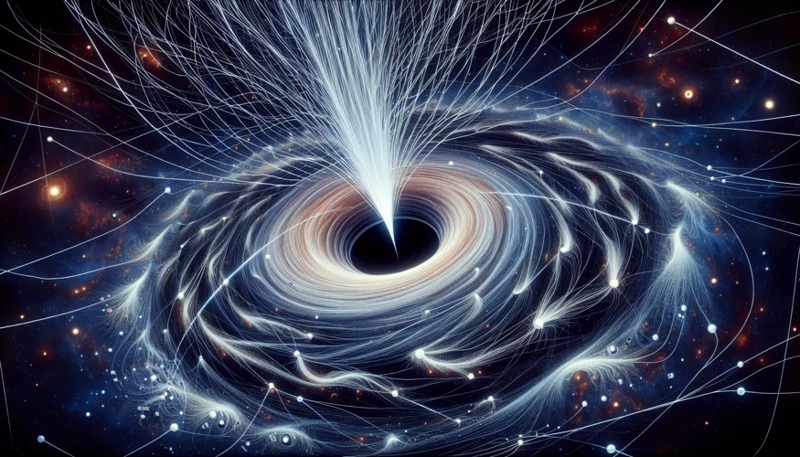
The implications of black holes extend far beyond their captivating nature. These enigmatic cosmic entities have profound effects on the surrounding space and the very fabric of the universe. As matter spirals into a black hole, it forms an accretion disk, a swirling disk of superheated gas and dust. The intense gravitational forces in the vicinity of a black hole transform this material into a cosmic inferno, generating immense amounts of energy. These energetic jets can be observed emanating from some black holes, shooting out into space for thousands of light-years. These jets have a significant impact on the surrounding galaxy, influencing star formation and galactic evolution. The formation and growth of black holes also play a crucial role in shaping the structure of the universe itself. Scientists theorize that supermassive black holes, which reside at the centers of galaxies, influence the growth and distribution of cosmic structures. They believe that these colossal gravitational powerhouses have a hand in shaping galaxy clusters and large-scale cosmic filaments. The existence of black holes challenges our understanding of the universe and pushes the boundaries of scientific exploration. By studying these celestial phenomena, scientists are able to gain invaluable insights into the workings of the cosmos and unlock the secrets of the universe’s evolution.
Effects on Surrounding Space
Effects on Surrounding Space:
– Gravitational Distortion: Black holes possess an incredibly strong gravitational pull that warps the fabric of space-time around them. This distortion of space leads to phenomena such as gravitational lensing, where the path of light from distant objects is bent as it passes near a black hole. This lensing effect allows us to observe distorted and magnified images of galaxies and other astronomical objects that lie behind the black hole.
– Accretion Disks: When matter falls into a black hole, it forms an accretion disk around the event horizon. These disks are comprised of gas, dust, and other cosmic debris that spiral inward due to the intense gravitational forces. As the matter within the disk heats up due to friction and tidal forces, it emits powerful radiation across the electromagnetic spectrum, including X-rays. This radiation allows us to detect and study black holes indirectly, as the emitted energy provides clues about their presence and characteristics.
– Jet Formation: Some black holes exhibit the phenomenon of jet formation, where high-energy particles are ejected from the regions surrounding the black hole’s event horizon at nearly the speed of light. These jets can extend for thousands of light-years into space and emit powerful bursts of radiation. The precise mechanisms that drive jet formation are still not fully understood, and ongoing research aims to unravel this fascinating phenomenon.
– Destruction of Nearby Objects: As objects come within the gravitational influence of a black hole, they may be torn apart by the extreme tidal forces. This process, known as tidal disruption, results in the material being stretched and shredded into long streams before being accreted into the black hole. These events release immense amounts of energy and can be observed as luminous flares, providing valuable insights into the behavior of black holes and their interactions with surrounding matter.
Theory of Black Holes and the Universe
The theory of black holes opens a window into a deeper understanding of the universe and its fundamental workings. According to the principles of general relativity, put forth by Albert Einstein, the presence of a black hole warps the fabric of space-time around it, creating a gravitational well. This curvature influences the motion of nearby objects and dictates the trajectory of light passing through its vicinity. The study of black holes has unearthed intriguing connections between the microcosm of these enigmatic entities and the macrocosm of the universe itself. It is believed that black holes may hold clues to the mysterious phenomena of dark matter and dark energy, which constitute the majority of the universe’s mass and energy yet remain largely elusive. Black holes may have played a critical role in the formation and evolution of galaxies, shaping the structure of the cosmos as we know it. The theory of black holes has become intertwined with cosmology, offering insights into the origin, fate, and composition of the universe. As scientists continue to probe the depths of these cosmic enigmas, they hope to unlock the secrets of the universe on a scale both small and grand, revealing the intricate tapestry of celestial existence that stretches far beyond our own planetary realm.
Unanswered Questions and Ongoing Research
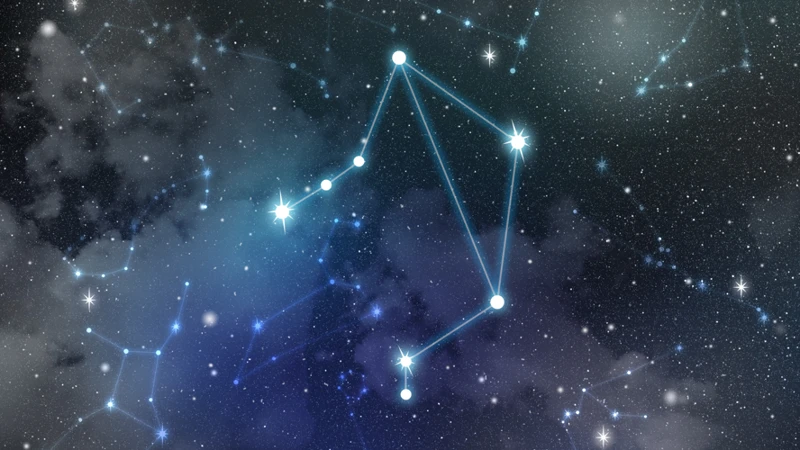
The realm of black holes is a realm of inherent mystery, leaving scientists with numerous unanswered questions and fueling ongoing research in the field. One of the key areas of investigation revolves around the concept of black hole information paradox. According to our current understanding of physics, information cannot be destroyed, yet black holes seem to possess a powerful gravitational pull that engulfs everything, including information. This conflict raises fundamental questions about the preservation and fate of information within black holes. Researchers are actively exploring theories and models that address this paradox, such as the holographic principle and the possibility of information leakage through Hawking radiation. Another area of ongoing research relates to the internal structure of black holes. Despite our understanding of the event horizon, the precise nature of what lies within remains a mystery. Theoretical physicists are engaged in efforts to reconcile general relativity with quantum mechanics to provide a comprehensive description of the interior dynamics of black holes. Additionally, the search for gravitational waves emitted by merging black holes continues to be at the forefront of observational research. The recent breakthroughs in gravitational wave detection have opened up new avenues for studying black holes and their interactions in the cosmic ballet. With the advent of advanced technologies and innovative methodologies, the quest to unravel the enigmas of black holes carries on, pushing the boundaries of human knowledge and reshaping our conception of the universe.
Conclusion

In conclusion, the enigmatic nature of black holes continues to captivate scientists and stargazers alike. These cosmic marvels, formed through stellar collapse or the accumulation of vast amounts of mass, challenge our understanding of the universe and stretch the limits of known physics. The existence of black holes not only reveals the profound mysteries that lie within the depths of space but also raises fundamental questions about the nature of gravity, time, and the fabric of our reality. Despite the wealth of knowledge we have gained about black holes, there are still many unanswered questions and ongoing research that seeks to unveil their elusive secrets. From the effects on surrounding space to the implications for our understanding of the universe itself, the study of black holes continues to push the boundaries of human knowledge. As we peer into the depths of these celestial giants, we can only marvel at the vast expanse of the unknown that lies before us, beckoning us to further explore the mysteries that lie beyond.
Frequently Asked Questions

What is the gravitational force like inside a black hole?
Inside a black hole, the gravitational force becomes infinitely strong, according to the theory of general relativity. As you move closer to the center of a black hole, the gravitational pull increases exponentially, leading to a phenomenon known as gravitational singularity.
Can anything escape from a black hole?
Once an object crosses the event horizon of a black hole, it seems impossible for anything to escape, not even light. The intense gravitational pull ensures that anything within the event horizon is trapped, making it seemingly impossible to break free.
What happens to time near a black hole?
According to the theory of relativity, time is affected by gravity. Near a black hole, where gravity is incredibly intense, time slows down. Clocks near a black hole would appear to tick slower compared to clocks further away, creating a time dilation effect.
Do black holes only exist in space?
While black holes are primarily associated with space, there is a possibility of tiny black holes existing on Earth. These “primordial black holes” are remnants from the early universe and, if they exist, would be incredibly challenging to detect due to their small size.
Are there different sizes of black holes?
Yes, black holes can vary in size. Stellar black holes are formed from the collapse of massive stars and typically have a few times the mass of our Sun. Supermassive black holes, on the other hand, can have millions or billions of times the mass of the Sun and are found at the centers of galaxies.
What happens when two black holes collide?
When two black holes collide, they merge to form an even larger black hole. This cosmic event releases an enormous amount of energy in the form of gravitational waves, causing ripples in the fabric of spacetime that spread throughout the universe.
Can black holes die?
According to current scientific understanding, black holes do not die in the conventional sense. However, they can slowly dissipate over an incredibly long timescale through a process called Hawking radiation. This radiation leads to a gradual loss of mass and energy for the black hole.
Can a spacecraft survive near a black hole?
Surviving near a black hole would be extremely challenging due to the intense gravitational forces and the potential for tidal forces to tear objects apart. The extreme conditions near a black hole make it highly dangerous for any spacecraft to venture too close.
Do black holes have a top or bottom?
Black holes do not have a top or bottom in the traditional sense. They are objects with spherical symmetry and are characterized by a singularity at their core, surrounded by the event horizon. The singularity is the point of infinite density, where our current understanding of physics breaks down.
Are black holes completely ‘black’?
While black holes are known for their ability to trap everything, including light, they are not entirely “black” in a literal sense. Surrounding the event horizon is a bright disk of hot gas and matter called an accretion disk. This disk emits radiation and can be observed in certain wavelengths.
References
Frequently Asked Questions

FACan anything escape from a black hole?
No, once something crosses the event horizon of a black hole, it is trapped and cannot escape. The gravitational pull is so intense that not even light can escape, which is why black holes appear black.
FACan black holes die or disappear?
According to current scientific understanding, black holes do not disappear. However, they can slowly lose mass and energy over time through a process called Hawking radiation. This process is extremely slow, so black holes are expected to exist for an incredibly long time.
FAAre black holes always the same size?
No, black holes can vary in size. The size of a black hole is determined by its mass. Stellar black holes, formed from the collapse of massive stars, can range from a few times the mass of our sun to several times larger. Supermassive black holes, found at the centers of galaxies, can be millions or even billions of times more massive.
FACan a black hole consume the entire universe?
No, a black hole cannot consume the entire universe. While black holes have powerful gravitational pull, they have a finite size and are limited in their range of influence. The universe is much larger and contains a vast amount of matter and energy that is not within the gravitational reach of black holes.
FACan black holes move or travel through space?
Yes, black holes can move and travel through space. Just like any other massive object, black holes can be affected by gravitational forces from other objects and can experience motion. However, the movement of a black hole is relatively slow compared to the vastness of space.
FACan we see black holes directly with telescopes?
No, black holes cannot be seen directly with telescopes. This is because black holes do not emit or reflect light. However, scientists can indirectly detect and study black holes by observing their effects on nearby matter and the surrounding space.
FAAre there any black holes in our solar system?
No, there are no known black holes within our solar system. The closest known black hole to Earth is located approximately 1,600 light-years away in the constellation of Cygnus.
FACan black holes appear anywhere in the universe?
Black holes can form in various locations throughout the universe. Stellar black holes can form from the gravitational collapse of massive stars, while supermassive black holes are believed to form at the centers of galaxies. They can exist in different galaxies and even in the empty regions of space.
FACan black holes create new universes?
There is currently no scientific evidence to suggest that black holes can create new universes. The formation and behavior of black holes are governed by the laws of physics within our known universe. However, some theoretical models and hypotheses propose the existence of parallel universes or multiverses, but these ideas are still under investigation.
FACan we enter a black hole and survive?
According to our current understanding of physics, it is highly unlikely that anything could survive the intense gravitational forces inside a black hole. The gravitational tidal forces would be so strong that any object or matter would be stretched and torn apart before reaching the singularity at the center of the black hole.







